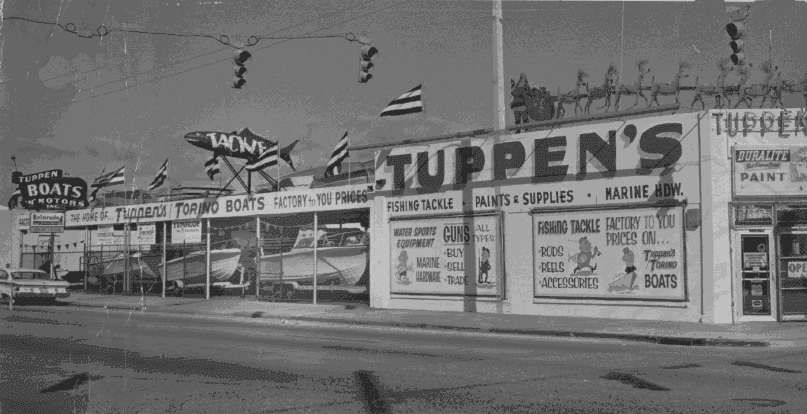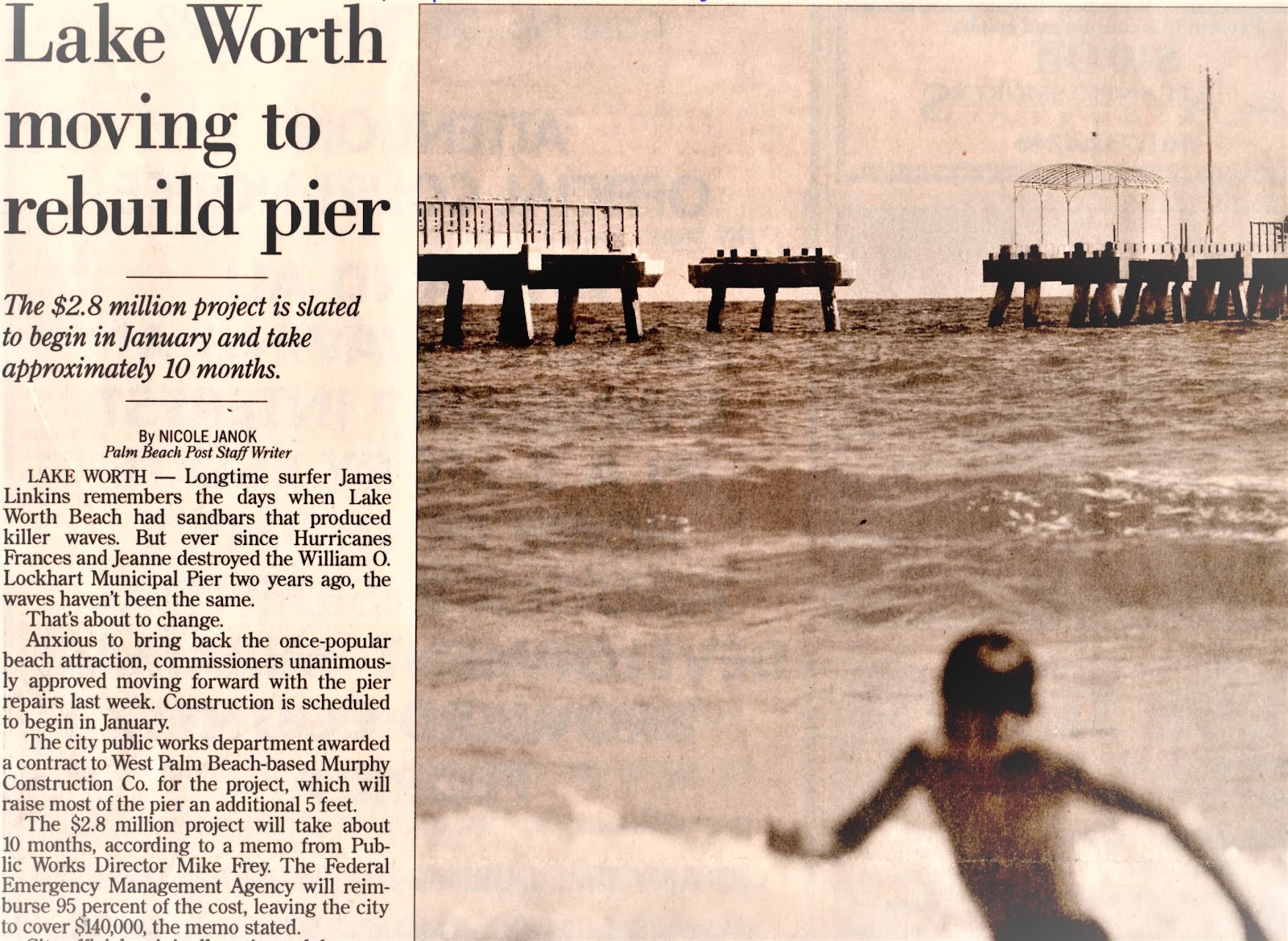What should have been an easy process to create a future land use plan designation that is appropriate for the beach property has turned into an elongated and involved process. This is primarily due to a series of bungles. And, in so doing, we have a situation that looks much worse on its face than it does upon analysis. Unfortunately, because it is complicated and the public has a hard time grasping some planning and zoning issues (like the difference between a future land use designation and a zoning district), there are those that are going to make more of an issue of this than necessary. And, once you peel everything away, there is some good news at the bottom of the bucket. But we have to go through the slop to get to the good stuff.
I'll warn you now. This is one of my longest posts here to date.
So, let me explain what happened and offer a prediction of what will be happening from here on out. But, first let's remember what we are trying to do by changing the future land use designation from Public Recreation and Open Space (PROS) to Beach and Casino (BAC). The following language represents the new language that would be added to the Future Land Use Element of the Comprehensive Plan:
 First of all, this single paragraph is not the zoning for the property. This paragraph is an amendment to our Comprehensive Plan that sets the foundation for the zoning district. The Beach and Casino zoning district is locally determined by the City Commission, based on a recommendation from the Planning and Zoning Board, and is not subject to review by the State of Florida Department of Community Affairs. The BAC zoning district is created by a separate ordinance and more specifically regulates the uses permitted on the property and the development standards (height, scale, setbacks, etc.) Second of all, the addition of this language alone does not change the land use designation of the beach property. It merely adds an additional land use designation to the list of available future land use designations for property within the City of Lake Worth. And third, this new BAC language does nothing but reflect that we do have commercial uses (private) along with public uses within this Beach and Casino future land use designation. The current PROS language does not allow anything else but open-air recreation facilities.
First of all, this single paragraph is not the zoning for the property. This paragraph is an amendment to our Comprehensive Plan that sets the foundation for the zoning district. The Beach and Casino zoning district is locally determined by the City Commission, based on a recommendation from the Planning and Zoning Board, and is not subject to review by the State of Florida Department of Community Affairs. The BAC zoning district is created by a separate ordinance and more specifically regulates the uses permitted on the property and the development standards (height, scale, setbacks, etc.) Second of all, the addition of this language alone does not change the land use designation of the beach property. It merely adds an additional land use designation to the list of available future land use designations for property within the City of Lake Worth. And third, this new BAC language does nothing but reflect that we do have commercial uses (private) along with public uses within this Beach and Casino future land use designation. The current PROS language does not allow anything else but open-air recreation facilities.By doing this, the City corrects a long-standing inconsistency by creating a future land use designation that actually reflects the conditions present at our beach property. The timing is keyed to the development agreement between the City and Greater Bay - meaning that the future land use and zoning district must be added so that the proposed redevelopment of the beach is consistent with both of them. The City could have created this language 20, 15 or 10 years ago, but for whatever reason, did not. The development agreement with Greater Bay merely pushed the issue.
Below is a segment of the June 5, 2007 City Commission agenda where you can clearly see all three parts (ordinances) related to the future land use plan amendment and zoning change for the beach. Note that items VII.A.1 and 2 are the only ones that are reviewed by the Department of Community Affairs - they are the ones that amend the City's Comprehensive Plan:

Do you remember the three petitions that were circulated by those who want the land use and zoning decision for the beach property to be determined by referendum? Each petition reflected the desire for the Commission to reconsider each of the above ordinances and if the Commission didn't overturn them, then they would go to a referendum. Due to the existence of those petitions and the lawsuits related to the length of the lease and the one initiated by the City for the declaratory judgement, the timeline has not started as laid out in the development agreement. So any delay represented by what is going on here is not part of the critical path. That is piece of good news number one.
Now, after the second reading the State of Florida either finds a local government's proposed amendments to the Comprehensive Plan in compliance or not in compliance. In our case, DCA has chosen to find the proposed amendments not in compliance with the Comprehensive Plan. A valid question here is "Why would they not find these amendments in compliance with the City's Comprehensive Plan?"
Here is the answer. Between first and second reading DCA performs an analysis on what the City sends up as back-up (data and analysis) which justifies the change to the future land use designation that we are seeking. In order for DCA to determine whether or not there will be adequate public services to support what is allowed through the future land use designation, it asks for a "worst case" analysis based upon the maximum amount and intensity of development allowed. In order to do this, one has to establish a measurement by which that is determined. In regulating the use of land, the overall determining factor for non-residential development is something called a "floor area ratio". The City did not include that after first reading, so the DCA sent back a letter called an "Objections, Recommendations and Comments" or ORC report and asked that the City set the maximum floor area ratio allowed for the BAC future land use designation and then perform various studies to determine the impact on public facilities.
So, in order to respond to the ORC report, studies were done to show the impact of the property's redevelopment based on an FAR of .1 (one-tenth). That means that given an 18.6 acre property, one-tenth of the total square footage of the property would be the maximum amount of "built" square footage you could put on it. Thus, the studies were based on roughly 81,022 square feet of building space. Yes, this is more than the casino building and the other retail area proposed, but it also counts locker rooms and other space that would not necessarily produce traffic (pool equipment rooms, etc.) The figure is higher than what is proposed because it is the maximum allowed under this proposed land use designation. Therefore, all of the studies were done on this conservative basis which over-estimated what might be built. This is standard procedure and part of proper planning techniques.
As an aside, you might recall the resulting discussion at the City Commission meetings in May and June where there was a lot of confusion over the traffic report. In order to determine the "maximum" traffic impact, the traffic study (performed by registered traffic engineers) assumed that the existing traffic coming from the beach was the same as any park. This under estimated the amount of traffic generated from the property today. Then, the traffic generated by the maximum amount of building space allowed under the proposed land use designation was layered on top of the existing traffic on the roadways. Therefore, the impact of the proposed project double counted traffic, since the difference in traffic from that generated by a regular park and that generated by our beach in its current state was already on the roadways. The conclusion was that even with these conservative assumptions, the redevelopment of the beach did not have an adverse impact on traffic.Other analyses regarding the impact on public facilities were performed and none were found to have an adverse impact. Again, these studies were based upon that .1 (one-tenth) FAR.
So, on a vote of 3-2 the Commission voted to approve these three items on second reading and forward the two (2) that were amendments to the Comprehensive Plan to DCA.
Are you still with me? Up to this point, everything worked as it should process-wise and detail-wise. It's after this point that things started to go hay wire.
Do you remember when this item had to be brought back again for "third reading" to correct a scrivener's error that left out the one sentence that established floor area ratio from the adopted Ordinance #2007-09 - the one that creates the future land use designation? For some reason, even though all the back-up material and the accompanying studies were performed based on the stated maximum FAR of .1, one simple sentence indicating the maximum FAR was left out of the final, adopted version of the ordinance that passed on second reading. The Commission held this "third reading" at its July 17th meeting and passed it on a vote of 3-2. According to City staff, this is how DCA told the City to handle the matter.
A few weeks pass and DCA reviewed what was sent up by the City. DCA calls the City and says that since this is a third reading, it will count towards the City's first Comprehensive Plan amendment for 2008! Local governments are limited to two major amendments to their Comprehensive Plans each year. If the City were to go along with this interpretation by DCA, suddenly the City would lose one of its Comprehensive Plan opportunities. Remember that the City will be having changes to the Comprehensive Plan coming through next year and under this interpretation that would likely hold up that process to boot.
So, to avoid that situation, DCA has issued a letter and Notice of Intent to find the City's amendment not in compliance with the Comprehensive Plan. Thus, we are not using one of next years submittal opportunities, but we have to go through the red tape that non-compliance represents. The fact that we are not losing one of next year's amendment possibilities is another slice of good news.
The letter below from DCA is just about as incoherent as it gets. If you read it, it says that the City' amendment is in compliance and non-compliance at the same time. What I understand it meant to say is that in the eyes of DCA, they don't recognize that we have established a maximum FAR for the BAC future land use designation (even though we have). But, if they recognize it, that means we lose one of our chance to amend the Comp Plan next year. And it's in non-compliance because they can't determine the impact (even though the studies are done and show no adverse impact) to public facilities since they couldn't have been done since a maximum FAR isn't established - in their eyes. ARGH!
Have you ever heard of such severe bureaucratitus?
Let's look at the atmospherics here too. DCA has been subject to who knows how many calls from "concerned" citizens here. So much so that I am sure the City is on a special list for extra vigilance. That doesn't help matters any. It also doesn't help matters that we have something from DCA saying that we are in non-compliance with our own Comprehensive Plan and Florida Statutes related to the redevelopment of the beach when we have these "concerned" citizens ready to devour every last crumb of negativity, real or imagined, and spit it out to all who care to hear.
The fact is the DCA has nothing against these amendments - other than the process wasn't what it should be. And in order to dot every "i" and cross every "t", we have to go through this process. What the process is, I am not exactly sure...I think attempts are being made to handle this at the staff level but I can't see how this won't come back to the Commission for final action.
I hope this clears things up as far as the documents below. This situation would be much more critical had the other "clouds" not appeared on the horizon, which I know is small consolation.
You can comment below if you have any questions.












